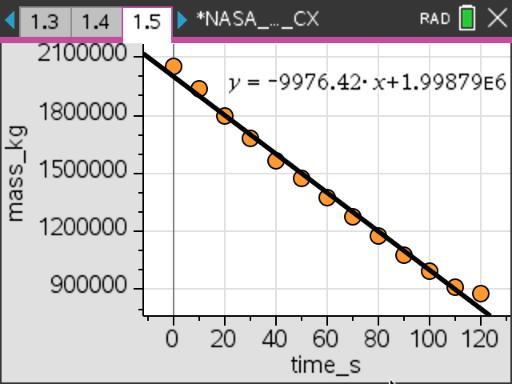NASA - Space Shuttle Ascent: Mass vs. Time

NASA - Space Shuttle Ascent: Mass vs. Time
In this activity, students explore the ascent phase which begins at liftoff and ends when the space shuttle reaches Earth's orbit. The space shuttle must accelerate from zero to approximately 7,850 meters per second (which is approximately 17,500 miles per hour) in eight and a half minutes to reach the minimum altitude required to orbitEarth. It takes a very unique vehicle to accomplish this task.
Students will:
- create scatter plots from a data table
- determine correlation and interpret its meaning
- find linear regression equations
- find the slope and y-intercept from a linear equation
- communicate the meanings of slope and y-intercept as they relate to a real-world problem.
This lesson focuses on the first ascent stage, which occurs during the first two minutes after liftoff.
The ascent phase begins at liftoff and ends when the space shuttle reaches Earth’s orbit. The space shuttle must accelerate from zero to approximately 7,850 meters per second (which is approximately 17,500 miles per hour) in eight and a half minutes to reach the minimum altitude required to orbitEarth. It takes a very unique vehicle to accomplish this task.
Vernier EasyData,Vernier EasyLink and Vernier EasyTemp are registered trademarks of Vernier Science Education.

